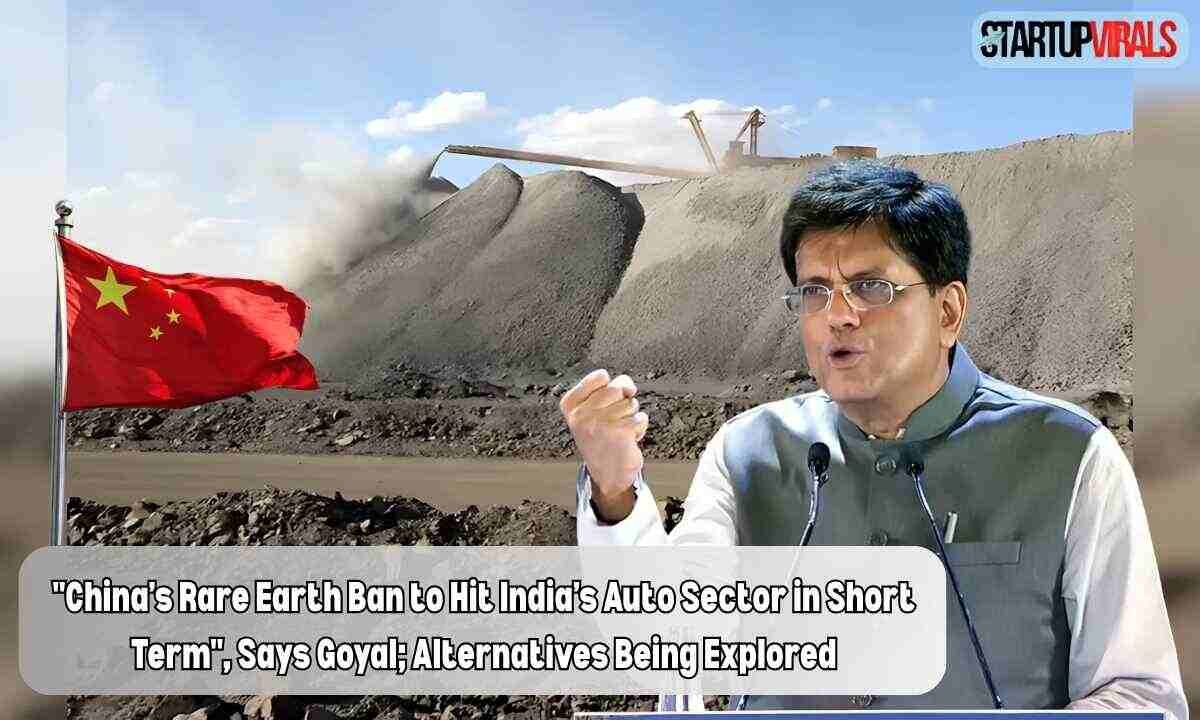China’s decision to hinder the export of rare earth elements has sent waves around India’s automotive and home appliances industries. These materials are very rare and were only found in China. Being the only country in terms of these rare elements, China considers itself a powerful nation which can dominate. Commerce and Industry Minister Piyush Goyal has accepted the immediate challenges and ensures that India is finding the best alternatives and is finding new sources and strengths to fight back.
Why Rare Earths Matter: The Hidden Backbone of Modern Technology
Rare Earth Elements are very necessary for the production of high-efficiency magnets. With them, we produce electric vehicles, wind turbines, smartphones, and even refrigerators. As said, these are the backbone of modern technology. China alone hold the monopoly of exporting these elements worldwide. It controls about 70% of global extraction and over 90% of processing.
China’s Move: What Has Changed?
China made a smart move as it imposed new restrictions on the export of seven key rare earth elements. This decision was taken in April 2025 and has affected the trade sector of the world. Now that this country has decided, the Chinese companies have to take special licenses before exporting any of these elements.
They say that this decision was necessary to secure their country from external powerful sources. India is the one that is affected the most, as it was dependent on Chinese companies to improve its manufacturing sectors.
Immediate Impact on Indian Industries
Since India is affected the most by this decision of China, the manufacturing sector has been very tense. Minister Piyush Goyal immediately visited Switzerland for trade discussions and to find an alternative. “The halt in rare earth magnet supplies from China is a real challenge for our auto sector and for manufacturers of white goods like air conditioners and washing machines,” he said.
Analysing the reports by the Industry insights, some Indian companies are actually tense about this situation as they believe that it may hinder their production, and India’s Automobile industry can face a major setback. The Society of Indian Automobile Manufacturers (SIAM) has warned that if the situation continues, the industry could face serious backlash.
Government Response: Turning Crisis Into Opportunity
The Indian government is all positive, as they believe that this situation can be overcome with suitable alternatives. The government is actively talking with Chinese officials through diplomatic channels to resolve the issue. The motive is to raise domestic production, and for this, the Ministry of Commerce is working with the Indian Rare Earths Limited (IREL) and other producers.
Minister Piyush Goyal stated, “This is a wake-up call for all of us; we must diversify our supply chains and invest in our rare earth processing capabilities.” It is important to identify the problem and resolve it to self extent. India is capable enough to find a better solution to this problem.
Indian Industry’s Next Steps: Innovation and Collaboration
- Finding Alternatives: India is a strong country, and they have started exploring alternatives. They are exporting those raw materials from other countries like Australia and Vietnam.
- Research for Substitutes: India is researching substitutes for these materials that can make the production effective. The research team is working day and night to find the best solution.
- Considering Special Incentives: he government is considering special incentives, such as production-linked incentive (PLI) schemes, to encourage local manufacturing of rare earth products.
- Self Belief: The Indian government believes that its auto manufacturers can build back with the right support and right adaptation.
Looking Ahead: Building a Bright Future
There are many countries which are affected because of this ban on the exports of such essential materials. Countries like India, Japan and others faced a backlash in the production of automobiles. The situation is a possible risk, but if India utilises its resources, it can become a leader in rare earth innovation. Why depend on other nations when you can make your resources work their best? Even the Indian minister Goyal says, “We are committed to turning this challenge into an opportunity. India will not only overcome this short-term disruption but will emerge stronger and more self-reliant in the years to come.”
Key Takeaways
Here are some of the key takeaways that we can draw from the current scenario:
- Due to China’s export prohibition on rare earth magnets, Indian appliance and car manufacturers are currently experiencing supply problems.
- By increasing local production and using diplomatic channels, the Indian government is aggressively looking for answers.
- Government and business are collaborating to identify substitutes, fund innovation, and lessen reliance on imports in the future.
- India is viewed as using the crisis as a springboard to solidify its place in the world’s rare earth supply chain.
Conclusion
China’s rare earth export restrictions have certainly created immediate challenges for India’s manufacturing sector, particularly for industries like automotive and electronics that rely heavily on these critical materials. However, this disruption is also acting as a catalyst for positive change. The Indian government, in partnership with industry leaders, is now accelerating efforts to develop domestic sources, invest in alternative technologies, and encourage local innovation. This collective response is not only helping India navigate the current shortage but is also laying the foundation for long-term self-reliance. Ultimately, these efforts could boost India’s global competitiveness and reduce future vulnerabilities.
You can also Read about:



